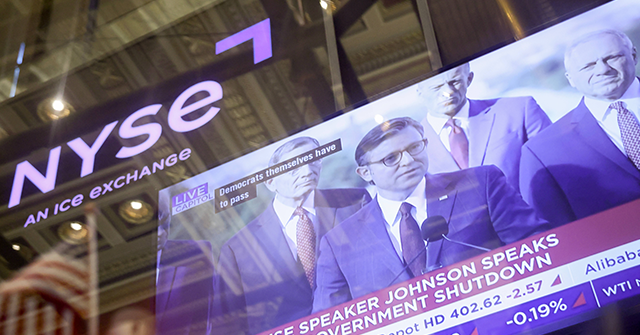The U.S. economy will be hampered by the Trump administration’s tariffs in the coming months, which along with interest rate cuts could lead to a “stagflation-lite” scenario of modestly elevated inflation and unemployment, according to the UCLA Anderson Forecast released Wednesday.
The fourth-quarter estimate also predicts that rising layoffs could lead to a recession, and if President Trump is successful in exerting more control over the Federal Reserve, a “full blown stagflation scenario becomes a more significant risk.”
“This forecast is being produced at a time when more extreme scenarios have become increasingly plausible, even though they do not yet represent our baseline outlook,” states the report by Clement Bohr, senior economist at the forecast.
UCLA’s report notes that the labor market “deteriorated notably” in June while inflation pivoted away from a path of “gradual normalization” onto a rising trajectory.
The quarterly forecast does not take into account the government shutdown that began Wednesday that could results in thousands of layoffs, but predicts third-quarter GDP growth will come in at just 1% on a seasonably adjusted basis, and it will weaken further as the full cost of the tariffs takes hold.
It expects growth to recover in the middle of next year and reach 2% by the fourth quarter, remaining there throughout 2027.
Driving the stagflation prediction is an effective tariff rate of about 11%, with the risk of future levies on pharmaceuticals and the potential lack of a resolution of the China trade dispute. The report notes the political pressure on Federal Reserve Chairman Jerome Powell and the decision by the bank to cut the federal funds rate by a quarter point in September. UCLA predicts a similar rate cut this month.
Trump’s “big beautiful” budget reconciliation bill passed in July, which included $703 billion in temporary tax cuts over the next four years starting in 2026, also will provide substantial stimulus. The Consumer Price Index is expected to peak at 3.6% in the first quarter of next year before easing.
However, the economy will be held back by a tightening labor supply caused by retiring baby boomers and restrictive immigration policies. The unemployment rate has crept up to 4.3% and is expected to peak at 4.6% early next year.
Also Wednesday, closely watched ADP Research released figures showed private-sector payrolls decreased by 32,000 in September with job growth slowing across many industries.
The billions of dollars being invested in artificial intelligence by large technology firms has helped prop up the economy, the forecast noted, which should result in productivity gains — but the capital expenditures should tail off as a “trough of disillusionment” sets in when revenue gains don’t meet expectations.
The report also expects consumer consumption to weaken following a surge in electric-vehicle purchases in the third quarter due to the expiration of federal tax credits last month.
Mark Zandi, chief economist at Moody’s Analytics, said if the government shutdown lasts a week or two it won’t have a “meaningful economic impact.” However, if it lasts for a month or more and is accompanied by mass federal layoffs, it would have a profound effect on the economy, Zandi said.
“It would wreak havoc on the financial markets as global markets and investors begin to wonder if we can govern ourselves,” he said. “That would mean higher interest rates and lower stock prices.”
The post UCLA forecasts ‘stagflation-lite’ economy with higher inflation and unemployment appeared first on Los Angeles Times.



